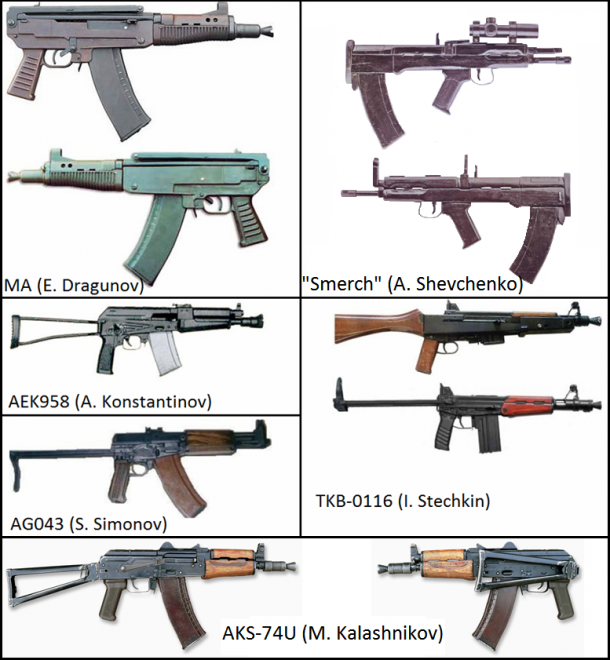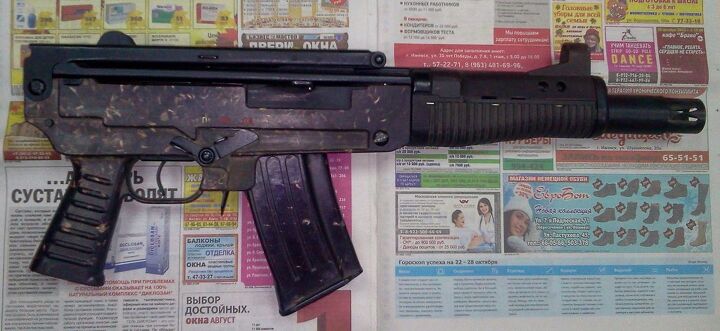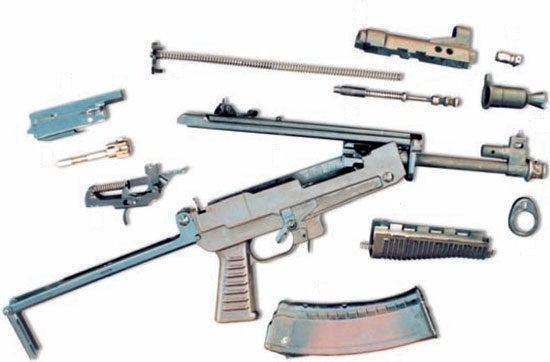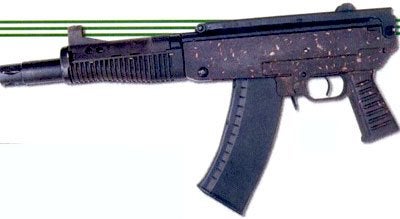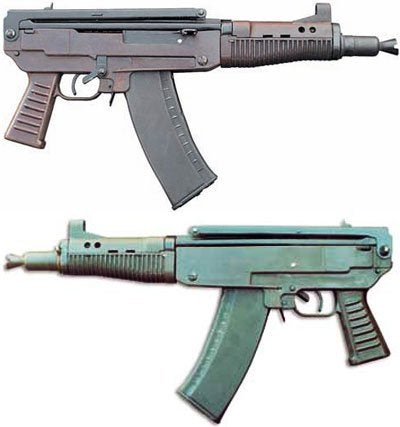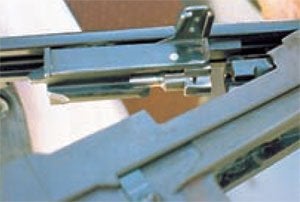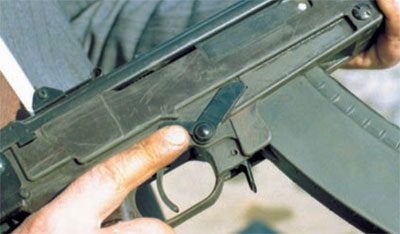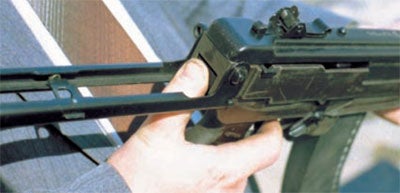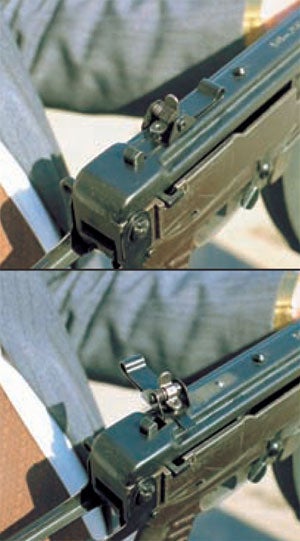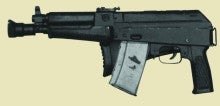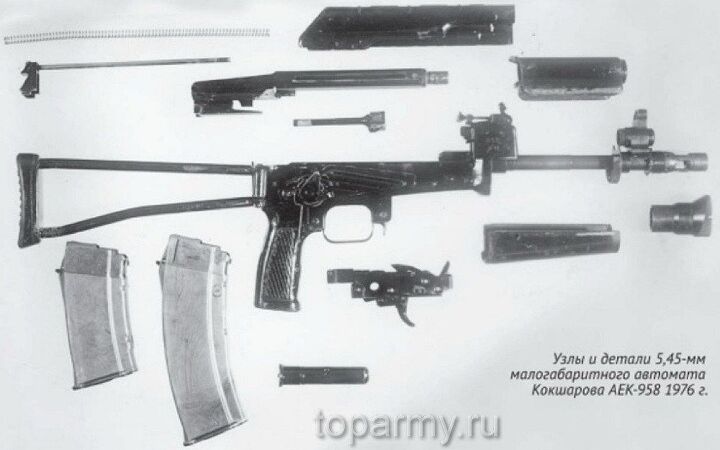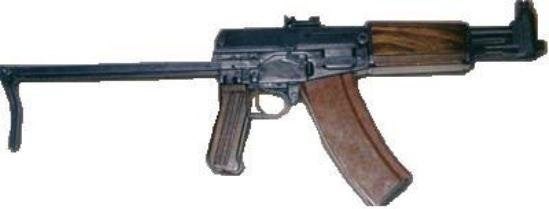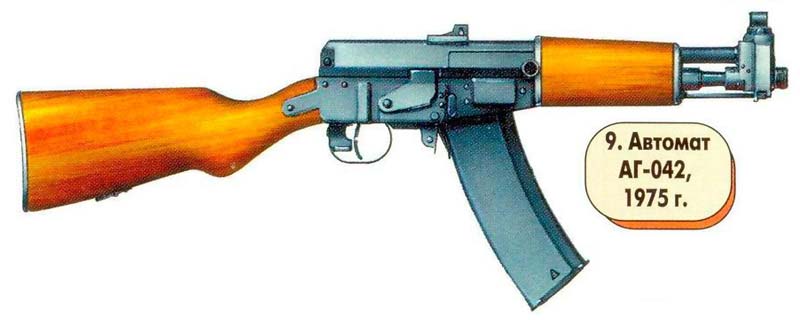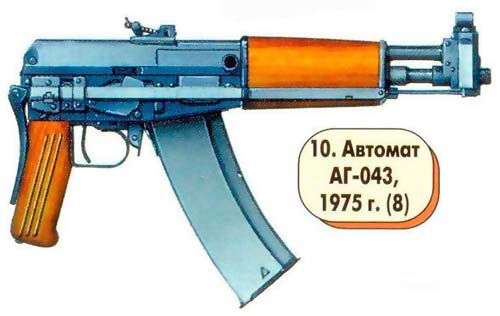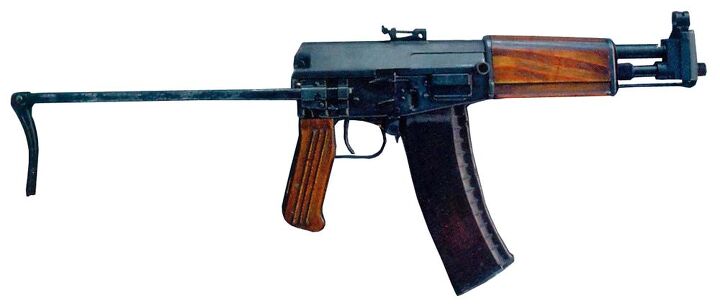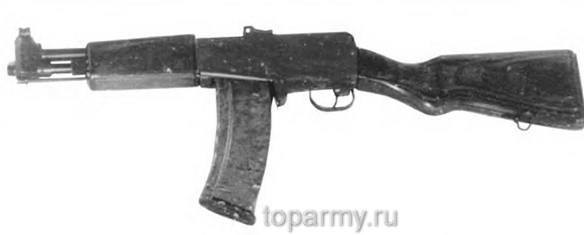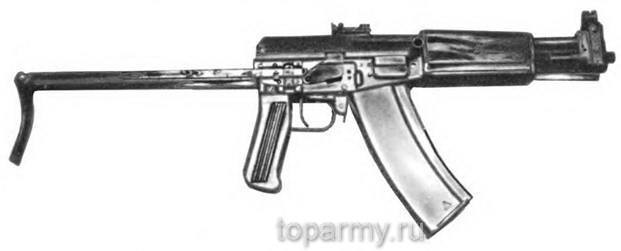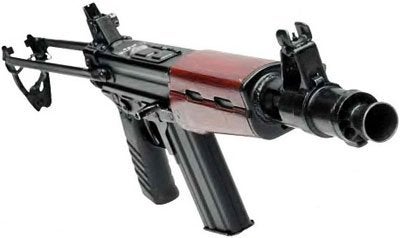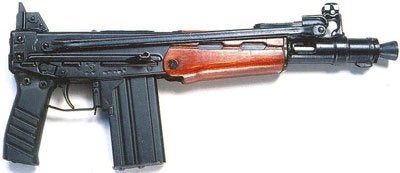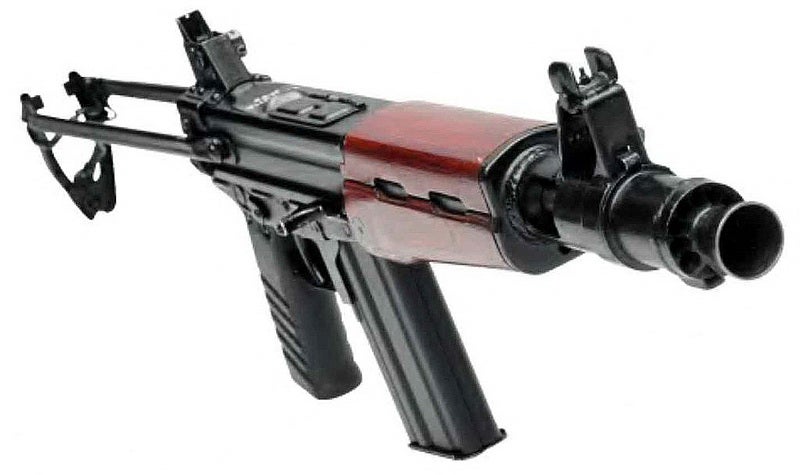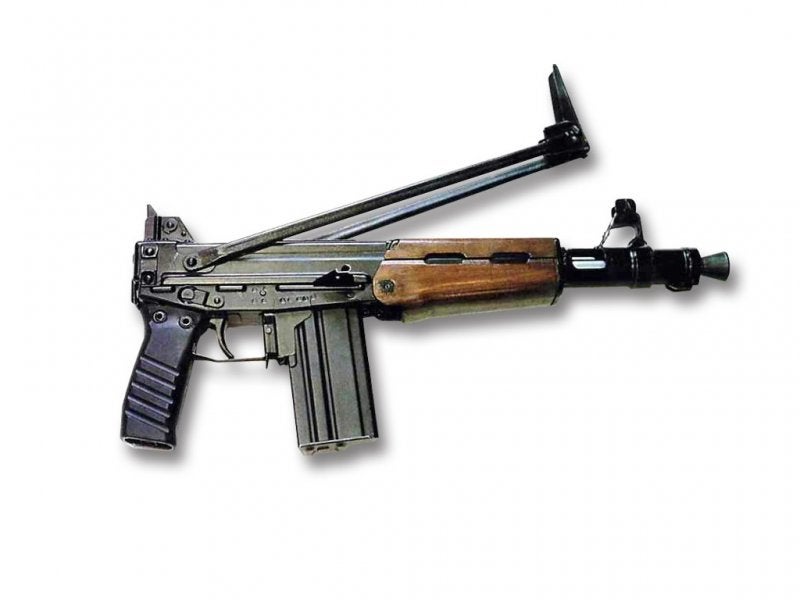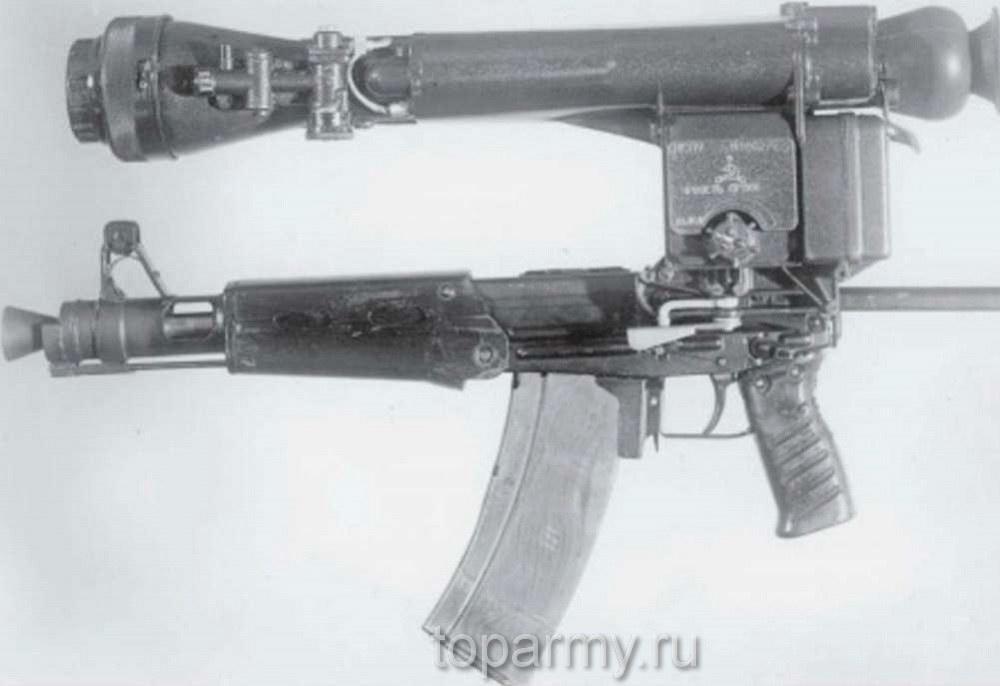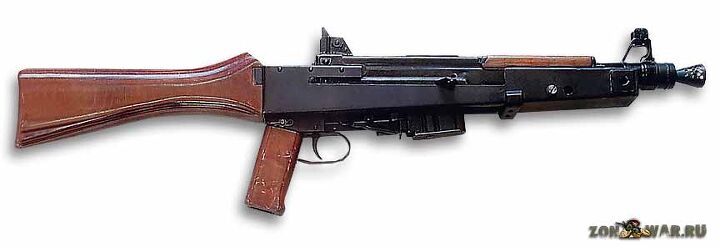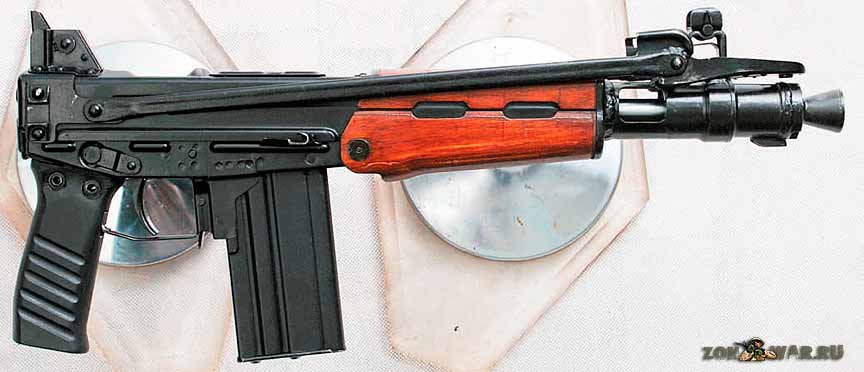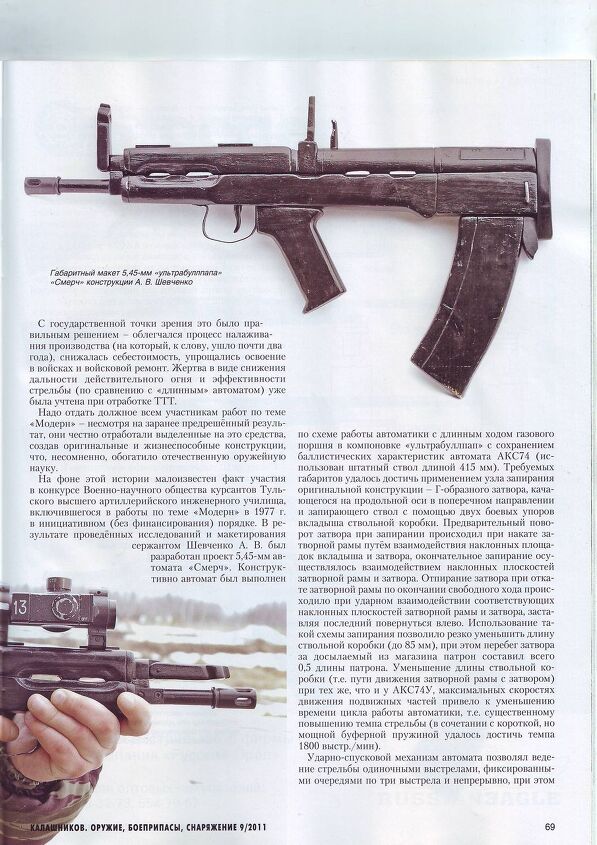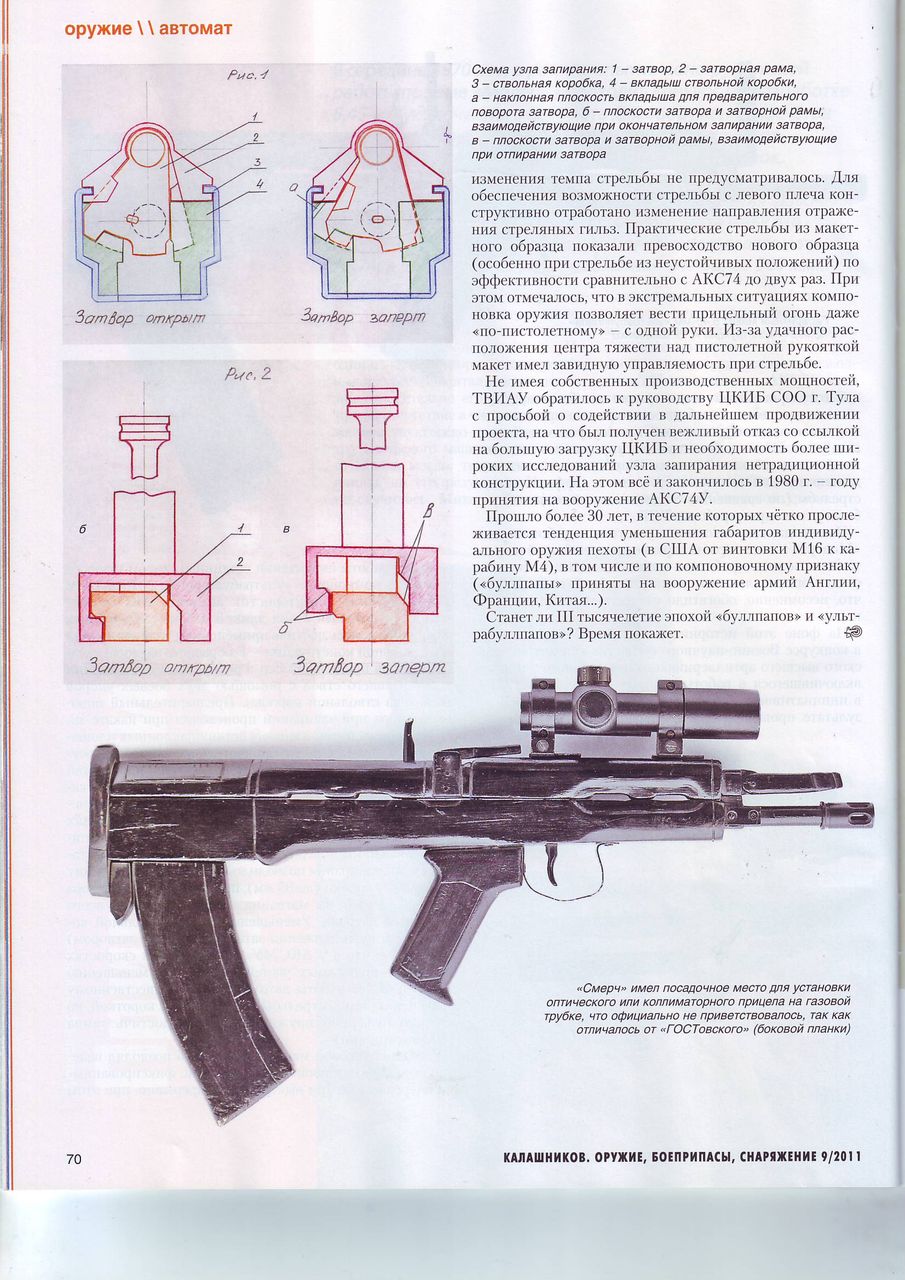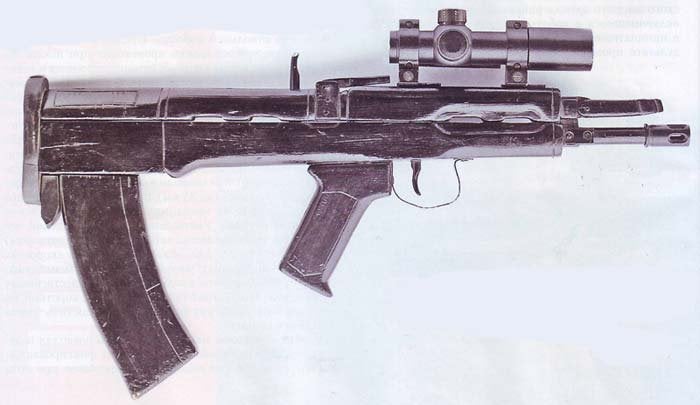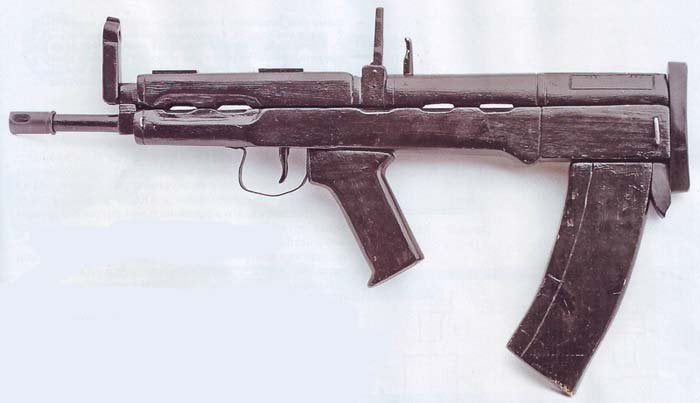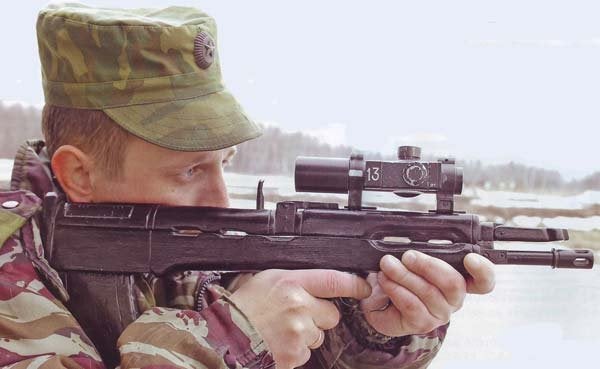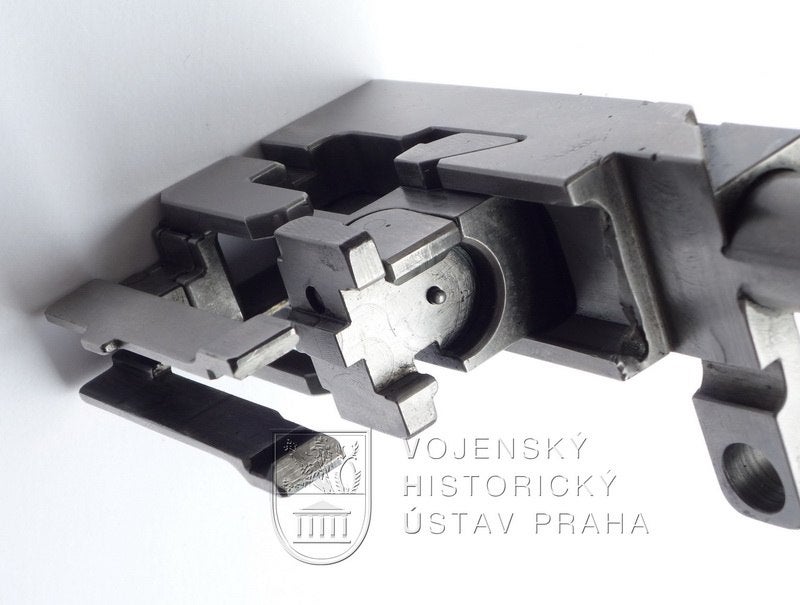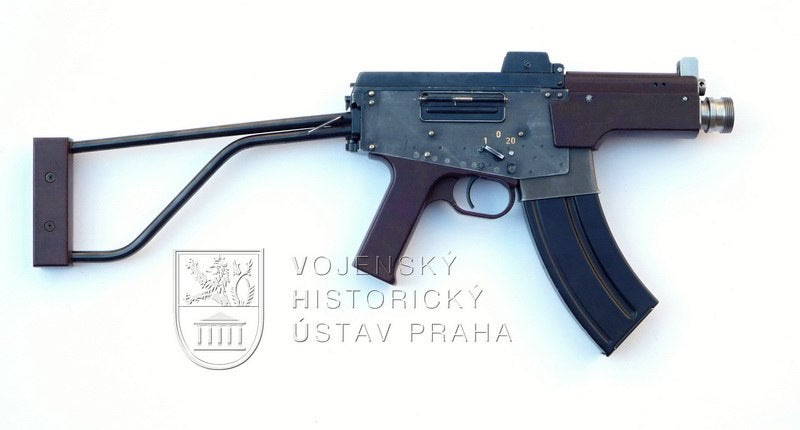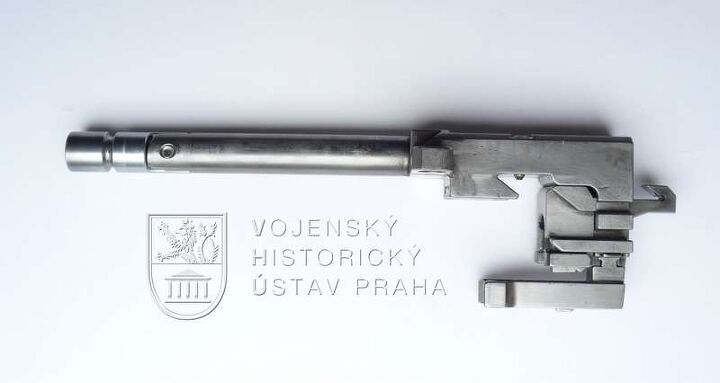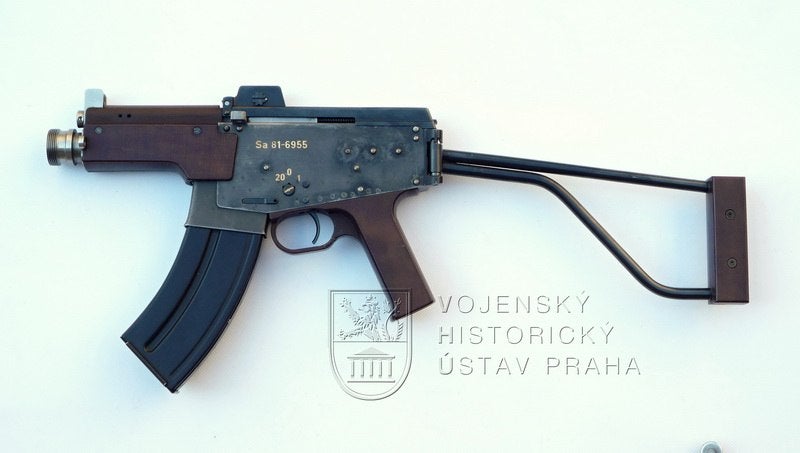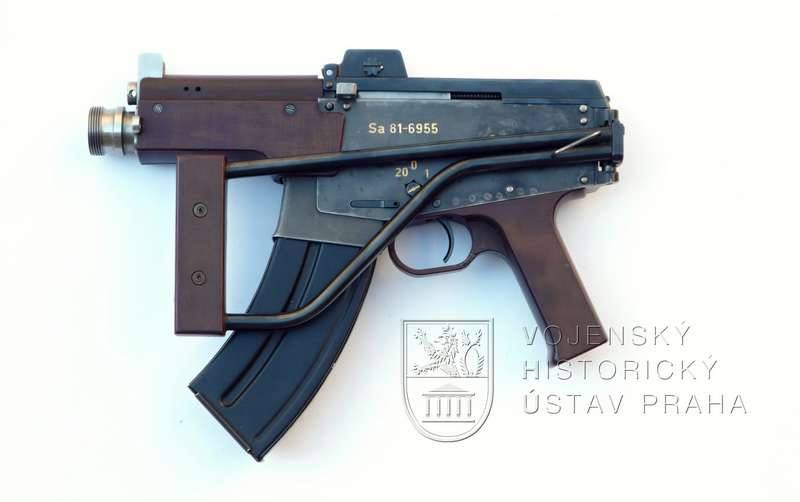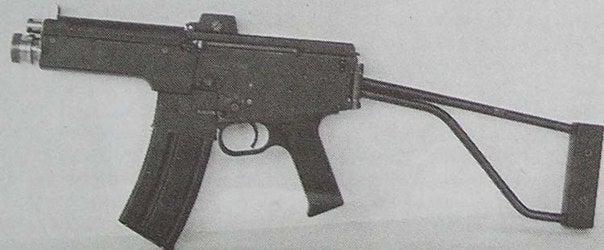Following close on the heels of our other articles about the development and use of the AKS74U “Krinkov”, we now bring to TFB an article specifically about the prototypes that were entered into the design competition, that would later turn into the standardized AKS74U. Many of these did not see any sort of service after the competition, but they were extremely interesting and innovative designs that were indicative of forward thinking when it came to small arms technology in the 1970s. To put things in a competing design perspective with the M16, there wasn’t any long lasting successfully standardized extremely short version of the M16A2 from that time period. Of course there prototypes and limited fielding, but none of these came close to the sheer numbers of production and usage that the AKS74U saw in Afghanistan in the 1980s (as a result of the trials in the 1970s). The M4 really didn’t start getting into full issue until the late 1990s, and before that it was the CAR15, a somewhat perfected carbine that really only saw use among American special operations forces and some select few government agencies.
Let me preface this article by mentioning that all the photos, and text are due to the efforts of an overseas TFB reader, Hrachya H. He has painstakingly translated the text from various Russian sources on the internet, in order for me to present here on TFB, for the enjoyment of our readers.
To begin, let us have some simple background knowledge, from my earlier article on the history of the AKSU–
The development of the AKS74U almost ran concurrent with development of the AK74service rifle, and the concept for an extremely compact submachine gun firing an intermediate cartridge was actually put into place before the 5.45x39mm round ever came into the picture. A Russian small arms designer by the name of Peter Andreevich Tkachev developed an Uzi like compact assault rifle, based around the round that the 5.45 was based on, the 5.6x39mm cartridge. The compact assault rifle had amagazine as the pistol grip itself, behind the trigger. The folding stock was meant to fold on top of the weapon, while there were wooden handguards wrapped around the barrel. This was in the 1960s and early 70s, wherein the concept was there, but a reliable firearm and cartridge wasn’t. It was called the AO-46, and never moved past the experimental stage. In 1973 when development of the AK74 was really taking off, the project was given new life, under a project that was code named “Modern”, headed by the Ministry of Defence Industry and Main Missile and Artillery Directorate (GRAU). The intention was to create a submachine gun that specialists within the infantry could use to compliment their primary weapon system. RPG gunners, vehicle crews for example. It was also conceived as a special purpose weapon for the Russian Special Forces, the Spetsnaz. One of the stipulations was that the weapon could not protrude outside of the width of a full packed soldier while in the field.
Now, we’ve got some much more in-depth description of the design characteristics that the GRAU was looking for. Similar to how some sneaky back door contract solicitations seem to even be written today(FN M240 Lima contract from the Army, M27 IAR contract USMC, need for an AR like LMG), it was glaringly obviously that this solicitation clearly only allowed one winner. But, a number of designers still put forth their prototypes for the design, and these were the characteristics they had to adhere to-
- The gun had to be select fire
- It had to weigh no more than 2.2kilograms (4.85lbs)
- Height and thickness had to be no more than that of the AK-74
- Overall length had to be no more than 750millimeters (29.5”) and length with folded stock – less than 450mm (17.7”)
- The gun had to have an effective firing range of 500 meters
6) Must be chambered in 5.45x39mm.
Now, for an in-depth look at the trial guns
Yevgeniy Dragunov’s MA design
Correct, the designer of the Dragunov sniper rifle also submitted a prototype to Project Modern. His design utilized a sort of glass reinforced ploymer for receiver material, with the bolt riding on a top mounted rail, thus the bolt carrier group was riding on the top cover of the design. It used a short stroke piston, with a bolt head very similar to standard Kalashnikov bolt head. The safety was a V shaped device that was just in front of the trigger guard. Similar to a Garand or SKS, the safety blocks access to the trigger when engaged. Pushing it up, would put the gun into semiautomatic or fully automatic modes of fire. Standard AK74 magazines are used while disassembly is accomplished by rotating and removing the rear sight, thus allowing access to the top cover to come off. It works as sort of a pop top on a soda can. The design of the hammer spring is also very similar to the Garands or SKS’s set up.
- 1) Weight (w/o ammo) – 2.5kg (5.5lbs)
- 2) Overall length – 735mm (28.9”)
- 3) Length with folded stock – 500mm (19.7”)
- 4) Barrel length – 212mm (8.4”)
- 5) Rate of fire – 800rpm
Andrey Konstantinov’s AEK-958
Unfortunately, this design is the least known about when it comes to the designs that were entered into Project Modern. From the outside the design looks very Kalashnikov-ish, but similar to the Vz.58, the internals tell a different story. For one, the trigger/fire control group can be completely removed similar to modern day drop in AR triggers, this being apart of disassembly. It appears that the gas piston tube and gas piston are within each other, if that even makes any sense. In addition, the recoil spring is sunk into the receiver like a PKM’s recoil spring is. The design entered trials rather late, in 1976.
Sergey Simonov’s AG-043
Simonov, of SKS lore, put this creation together and submitted it in 1975. Rumor has it that instead of being successful with the Project Modern program, it went on to be used in very small numbers by the Soviet KGB. Apart from fitting within the parameters of the competition, it came in at a very lightweight package at only 4.63 lbs. An earlier version of the gun, the AG-042 had a fixed stock instead of a sliding metal wire stock. It also appears to have the only trial gun made with a cleaning rod in the traditional AK rod position, underneath the barrel.
Overall Length 680mm (26.8”)
Length with folded stock of 420mm (16.54”)
Weight 2.1kg (4.63lbs)
Igor Stechkin’s TKB-0116
The TKB entry reminds me very much of the Sig 510 with the straight walled metal magazine, straight pistol grip, and a very thin receiver and those odd halfway handguards. But that isn’t the only feature that set this entry apart. It wasn’t gas operated, but it was short recoil operated with a rotating barrel that locked up during the cycle of operations. To assist with this, the design had to incorporate accelerators, similar to how the Barrett M82 has a massive accelerator apart of its bolt. Ejection was upwards, and it has an ejection port cover as well, something you don’t find on many Soviet small arms. But the problem with the short recoiling barrel was that it seemed to have created more problems than it solved, in that it had to be a muzzle booster as well to compensate for the lack of force pushing the barrel to the rear from the 5.45 recoil. However, this also caused it to be an all in one muzzle brake/flash hider and somewhat of a rudimentary suppressor.
Overall length 743mm (29,3”)
Length with folded stock 458mm (18”)
Weight 2,31kg (5,1lbs)
Rate of Fire of 850 rpm.
A. Shevchenko’s Smerch
This is the only design that might have only existed in purely prototype form, meaning there might not have even been a firing model created of it. Nonetheless, it was included in the trials and thus deserves to have a mention here. The design of the iron sights appears to be somewhat “SCAR”-ish, but I will give the design credit for incorporating a telescopic sight, something that only the AUG had going for it during the 1970s.
”SMERCH” (means tornado in Russian) was designed in 1977 by A. Shevchenko, who was a student. So this was a project made and financed by a group of students. One of the reasons it didn’t proceed too far was the lack of financing. Some Russian firearms experts claim that there wasn’t even a working prototype of this gun made and the only version which is known of today is a wooden mockup.
This gun was the only bullpup in the trials. The gun was gas operated with long stroke piston. It had a very short bolt carrier group and short bolt stroke distance (only half of the cartridge length) which let it house a full size AK-74 barrel in required dimensions. The receiver was also very short – only 85mm (3.35”). Short travel distance of BCG and lightweight reciprocating parts resulted in a very high rate of fire of 1800rpm (!) … again, it is not clear if it was actually tested or it is a theory based calculation. The way it managed to have such compact BCG is because of
unique locking system with tilting L shaped locking lugs which are forced to lock and unlock the breech by camming surfaces in front trunnion and on bolt carrier.
And while we are on the topic of Soviet bullpup designs, this is an excellent Youtube video that will probably turn into a TFB post someday, but in the meantime, enjoy Cold War Soviet Bullpup designs!
 Your Privacy Choices
Your Privacy Choices
